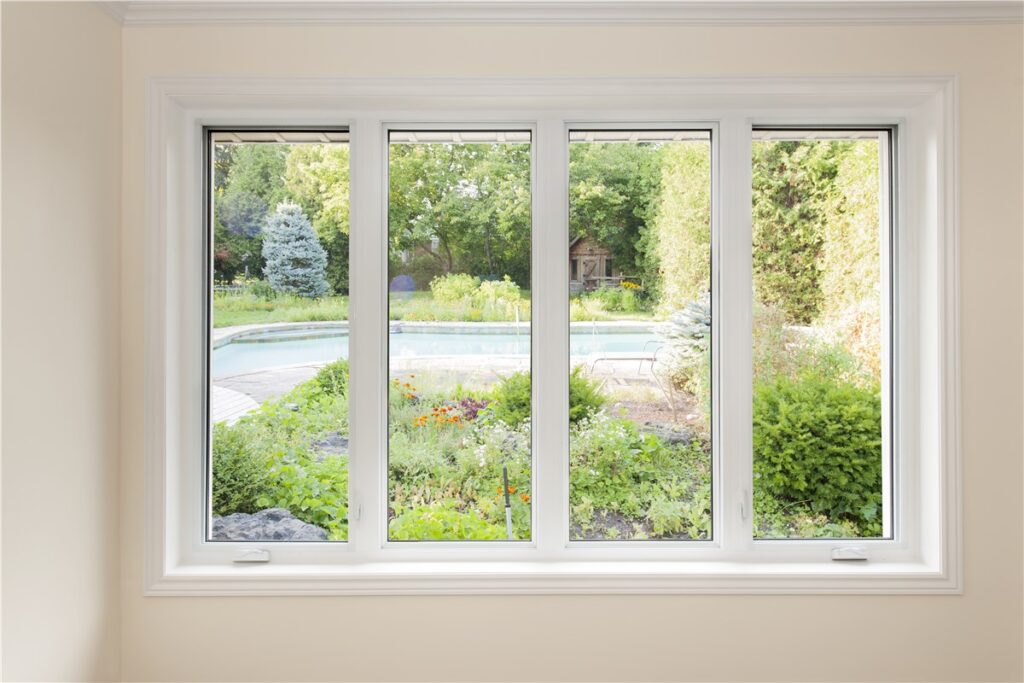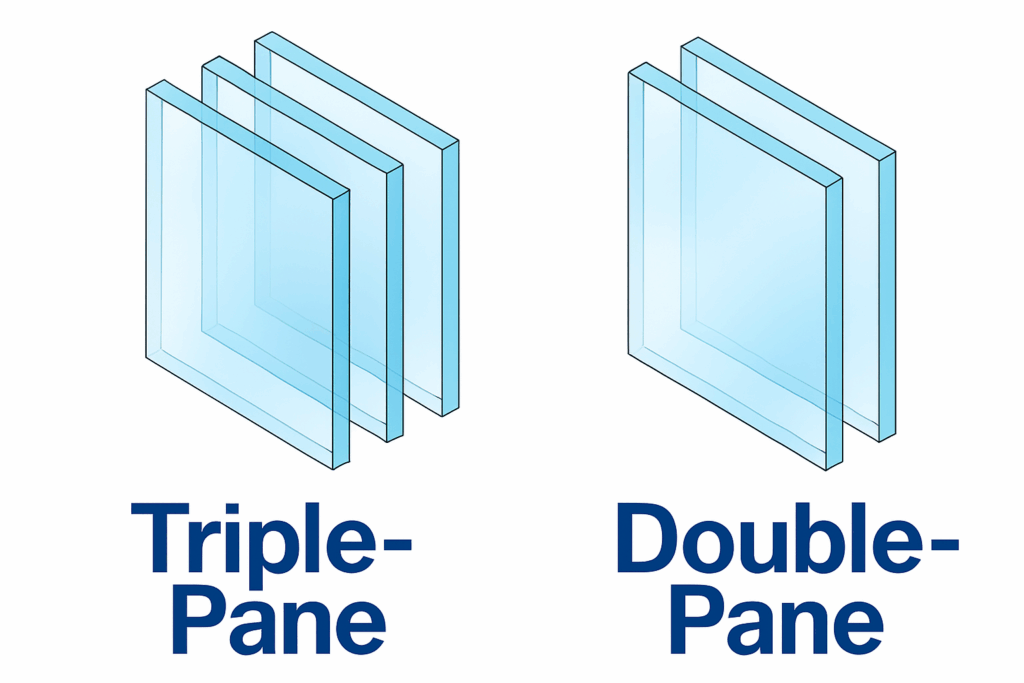
Open the shades on a frosty morning and you might notice tiny droplets sliding down the glass. That condensation on inside of windows may look harmless, but repeated cycles of moisture can swell wooden frames, stain drywall, and invite mold. Understanding why it forms—and how to stop condensation on windows—will protect both comfort and long-term home value.
Condensation 101
Condensation happens when warm, humid air meets a surface colder than the air’s dew point. Water vapor turns back to liquid, collecting as beads on glass. Bathrooms and kitchens produce the most indoor humidity, but everyday activities—simmering soup, drying laundry, even breathing—raise moisture levels throughout the house. If you find yourself asking, “Why is there condensation on the inside of my windows?” more often than in past winters, several factors may have shifted:
-
Added insulation or new roofing can trap humid air in a tighter envelope.
-
Older single-pane units lose heat quickly, chilling interior glass.
-
Failed dual-pane seals let cold outside air cool the inner lite.
-
Small leaks around frames introduce rainwater that evaporates indoors.
The Hidden Costs of Persistent Moisture
Occasional fog that clears within an hour is usually harmless. However, persistent wetness can drip onto sills, soften paint, and nurture black spots of mold bath fungi. Over months, frames may warp and sashes can stick, leaving gaps that waste energy. Ignoring moisture on windows can also contribute to structural issues—signs that your home may be developing water damage from window leaks.
First Line of Defense: Control Indoor Humidity
Ventilate High-Moisture Rooms
Run bath and range hoods for at least 20 minutes after showers or cooking. Leave interior doors ajar to let damp air mix with drier parts of the house.
Use a Dehumidifier
Set a portable unit to maintain 40–45 percent relative humidity. In very tight homes, consider a whole-house system tied into existing HVAC.
Circulate Warm Air
Ceiling fans on low speed push heat toward the floor, warming glass so droplets are less likely to form.
Add Houseplants Wisely
Overwatering tropical plants raises humidity. Choose species that transpire less—such as snake plant or English ivy—and water sparingly during winter.
Inspect for Leaks and Seal Problems
If condensation clusters around one sash or appears only after rain, inspect that frame. Cracked caulk, loose flashing, or worn weather-stripping can let moisture creep inside. Our step-by-step guide on how to repair a leaky window explains temporary fixes and when to call in a pro.
When Replacement Makes Sense
Older windows undermine every humidity tactic. High heat loss chills glass, and failed seals trap moisture between panes. Modern replacement windows solve both issues with advanced glazing, tight frames, and smooth-operating hardware.
-
Double- or triple-pane insulated glass sandwiches inert gas between panes. These energy efficient windows keep interior glass warmer and dramatically reduce condensation.
-
Vinyl windows resist warping, never require painting, and limit cold transfer better than aging wood or metal frames.
Homeowners often recoup installation costs through lower utility bills, reduced maintenance, and a healthier indoor environment.
How to Prevent Condensation on Windows After an Upgrade
-
Adjust humidifiers – Even with better glass, indoor humidity above 50 percent can still fog a pane on sub-zero nights.
-
Maintain weather-stripping – Check seals each year; compressed gaskets should spring back when pressed.
-
Keep blinds open during extreme cold – Airflow across glass stays warmer when coverings don’t trap cold air.
-
Use trickle vents – If your new units include them, leave vents partially open to let small amounts of dry air enter without noticeable drafts.
Quick‐Fix Checklist to Reduce Day-to-Day Condensation
| Action | Frequency | Result |
|---|---|---|
| Run bathroom and kitchen exhaust fans | Each use | Removes steam before it spreads |
| Squeegee shower walls and glass | Daily | Cuts indoor humidity and mold risk |
| Open a window for five minutes | Mild days | Replaces damp air with fresh, dry air |
| Move furniture two inches from exterior walls | Seasonally | Allows warm air to reach glass and drywall |
| Check exterior caulk | Twice a year | Seals gaps that let rainwater enter |
Frequently Asked Questions
Why do only certain rooms fog up?
Bathrooms and south-facing kitchens generate more humidity, while shaded or older windows cool faster, making condensation more likely in those areas.
Is exterior condensation a problem?
No. Dew on the outside of glass during humid summer mornings actually shows your interior pane is well insulated from outdoor heat.
How long should a pane stay cloudy before I worry?
If droplets linger more than two hours or puddles form on the sill, increase ventilation and inspect for leaks. Quick-clearing mist after a hot shower is normal.
Key Takeaways
-
Controlling indoor humidity is the fastest way to reduce condensation on inside of windows.
-
Mechanical ventilation, dehumidifiers, and smart plant choices all help stabilize moisture levels.
-
Inspect caulk and seals regularly; small leaks can undo other efforts.
-
When glass is chronically cold or seals have failed, replacement windows—especially vinyl, double-, or triple-pane models—offer the most effective long-term solution.
Ready to eliminate foggy panes and improve energy savings? Schedule a free consultation with Statewide Remodeling to explore styles, financing, and installation options. Clearer views and healthier air with new windows are only a call away.






.png)
.png)



